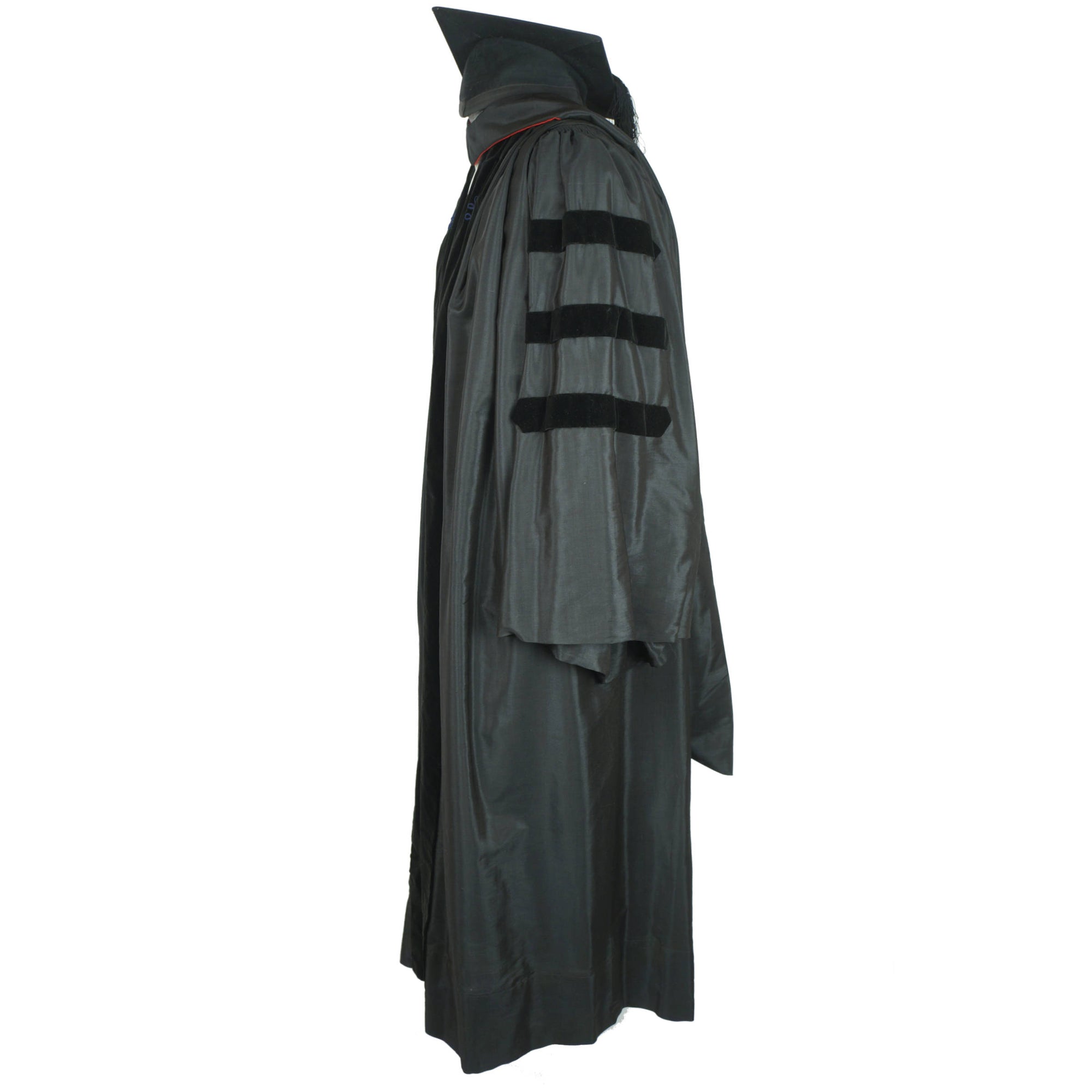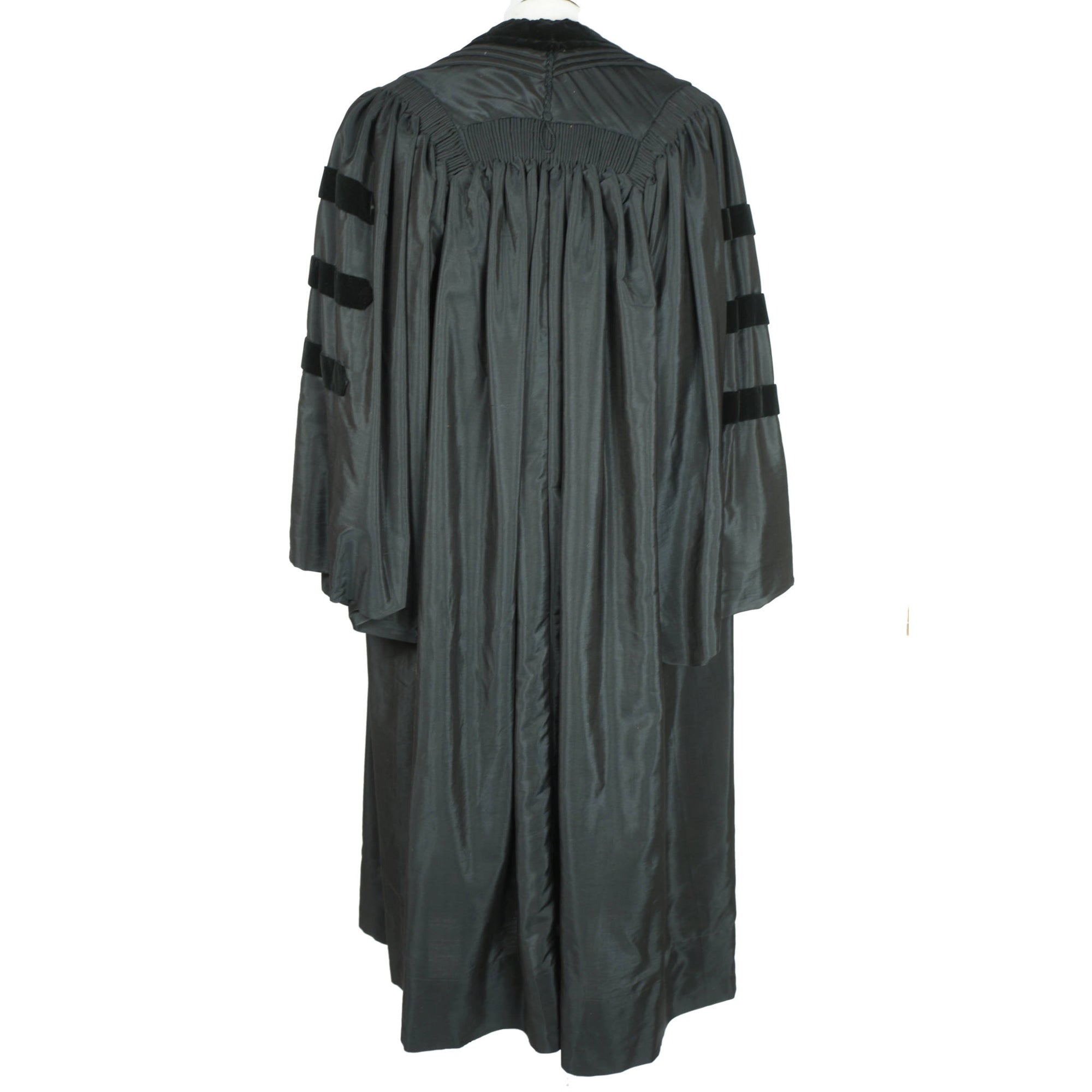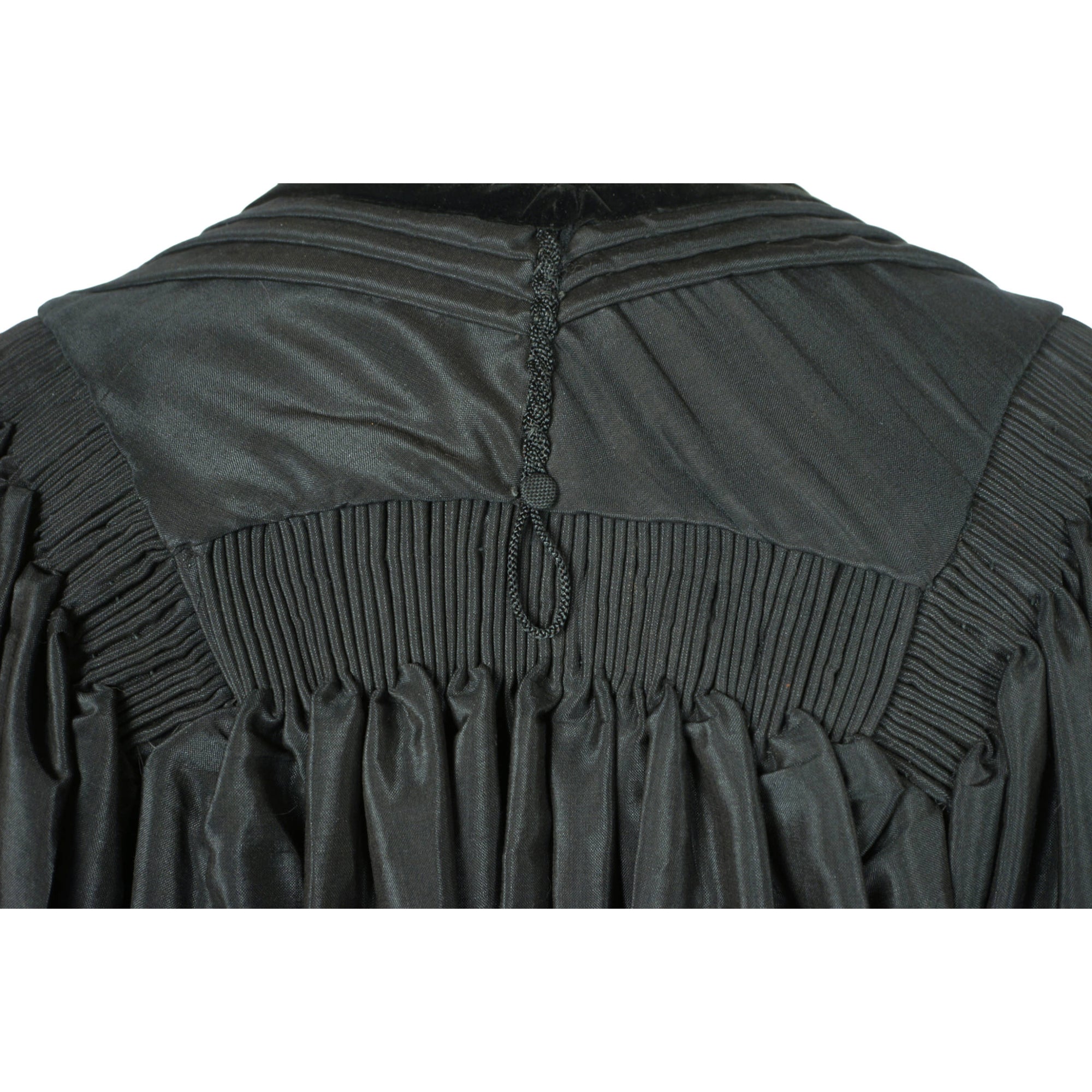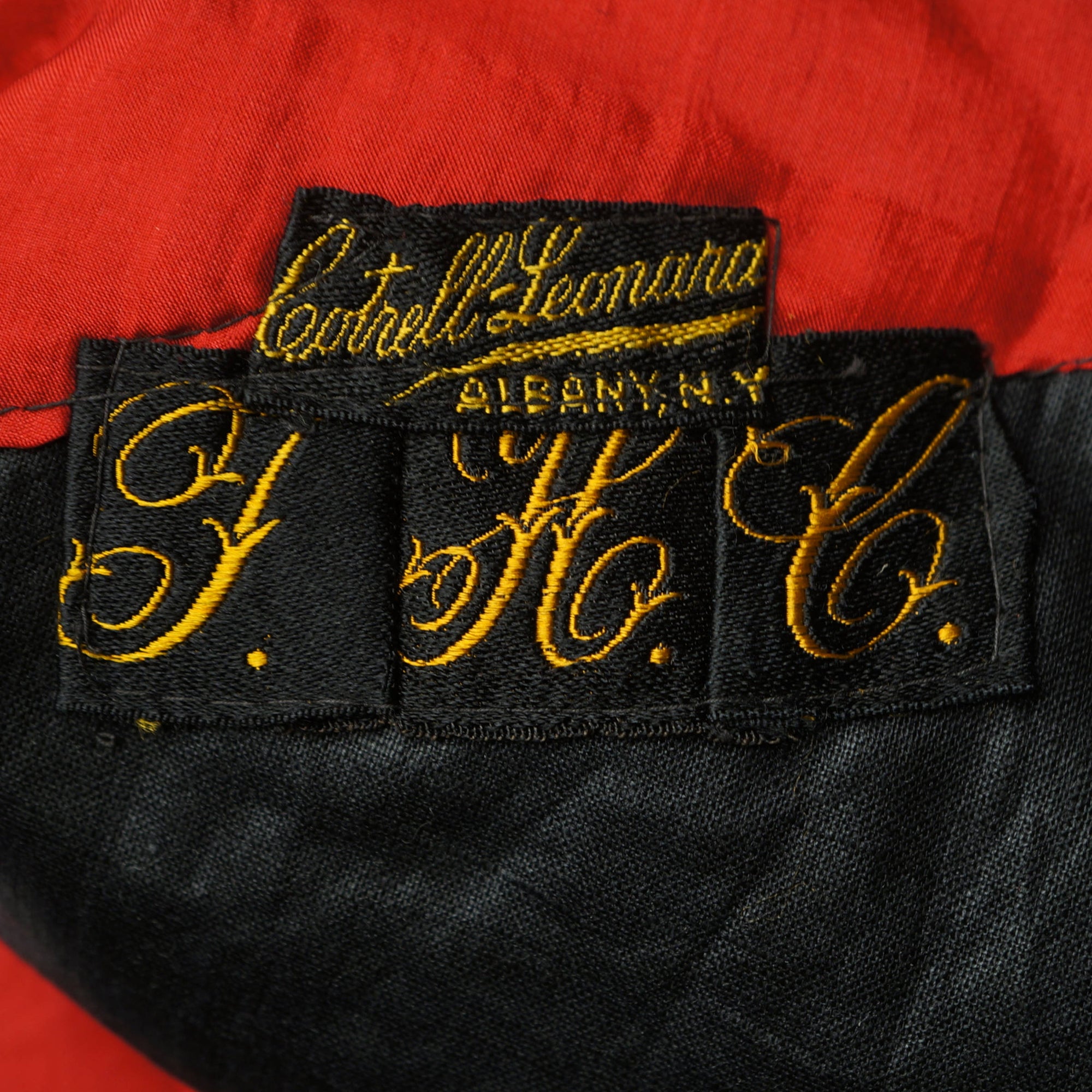
1923 Vintage Harvard Doctoral Gown Doctorate Graduation Robe
This is a wonderful 1920s Harvard doctoral gown that belonged to a Canadian scientist of note - please read further down for a short bio on the original owner and his accomplishments. This individual graduated in 1923 from Harvard with his doctorate. This Harvard doctoral gown was made by Cottrell & Leonard of Albany, New York and the mortar board cap was made by E.R. Moore of Chicago. In 1886 Harvard adopted formal academic dress standards and in 1897 named Cottrell & Leonard as the official suppliers. This Harvard doctoral gown is made of black silk worsted with black velvet front facings and three black velvet bars on each sleeve. It has the distinctive double loop crow’s feet embroidery on the front facings in the colour of dark blue, which is the colour used for a degree in philosophy. The hood is lined in crimson red silk and is four feet long as per the standard for doctoral graduates. The cap is a standard square with black tassel. Both the hood and the gown bear Cottrell & Leonard labels, the gown having a more intricate version with a graphic of a graduating student. All three pieces of this Harvard doctoral gown bear the initials “THC”, which are those of the original owner. All three pieces are in excellent condition, obviously treasured and well stored over the last nearly 100 years by the sole descendant, as befitting the status of the original owner.
The original owner of this Harvard doctoral gown was Thomas Henry Clark, a geologist and paleontologist considered to be one of Canada’s top scientists of the 20th century. After graduating from Harvard, Clark attended McGill University in Montreal as a post-doctoral student in paleontology. He began teaching as an assistant professor at McGill in 1924 and remained there as a teacher and then Emeritus Professor until his retirement from McGill at the age of 100 in 1993 - a career of 69 years! He worked as a geologist for the Geological Survey of Canada and was curator of the Redpath Museum, responsible for the majority of the museum’s exhibits. He authored some 100 books and his book “The Geological Evolution of North America” is a classic standard university textbook. He was held in such high esteem as a mentor, educator, geologist and gentleman that upon his death at the age of 103, a mineral was named after him - Thomasclarkite, a scarce rare-earth element found on Mont Saint-Hilaire in Quebec. This Harvard doctoral gown deserves to be preserved as a testament to a life dedicated to the pursuit of excellence.









